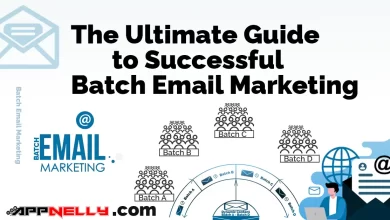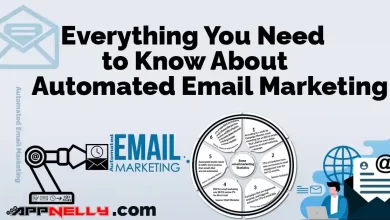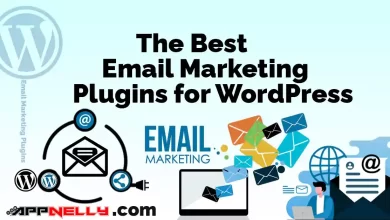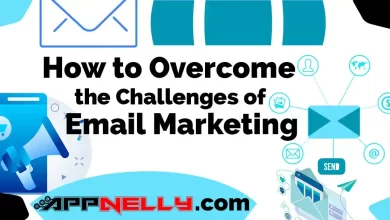Newsletter Email Marketing: Everything You Need to Know
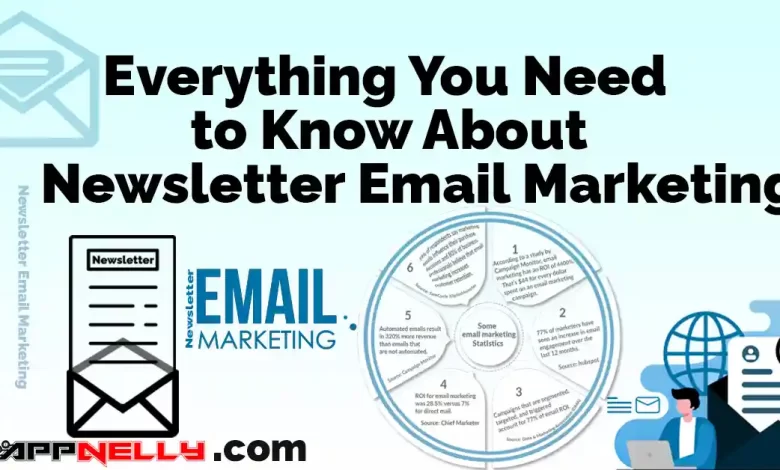
Introduction
Newsletter email marketing is one of the types of email marketing. It’s a regularly-sent emails to subscribers with the aim to engage and inform them. It’s an effective way to communicate with your subscribers/customers, build brand awareness, and increase conversions. In today’s post, we'll define newsletter email marketing, highlight its benefits, and provide tips for creating successful campaigns. We'll also explore common mistakes to avoid and showcase examples of successful newsletter email marketing campaigns.
Purpose of this Post
The purpose of this post is to provide our readers with a comprehensive guide to newsletter email marketing which was listed in our previous post as one of the types of email marketing.
Definition of Newsletter
The following 3 definitions of newsletter will help you to understand the meaning of newsletter. Spot the one good for your level of understanding.
- A newsletter is a regularly distributed publication that contains information and news about a particular topic or organization.
- A newsletter is a special kind of letter that gets sent out regularly to a group of people who share a common interest. It has news and updates about that interest, like a sport or a musical band or a craft. it's a way for people to stay connected and learn new things about what they love and enjoy!
- A newsletter is a special kind of letter that's sent out regularly to a group of people that like the same thing. It contains news or an update about that thing, for example: Foods, Fashion or a Hobby. it's a way for people to stay connected and learn new things about what they love!
Newsletters are typically sent via email, but they can also be distributed through physical mail.
Email Marketing
Email marketing is the act of sending commercial messages to a group of people via email. Email marketing is used by businesses to promote their products or services, build brand awareness, and increase customer engagement.
What is Newsletter Email Marketing?
Newsletter email marketing is a type of email marketing where a business sends out regular email newsletter to its subscribers. A newsletter can contain information about the latest products or services, industry news, promotions, and other relevant information. Newsletters are usually sent on a regular basis, such as weekly, biweekly, or monthly.
Definition of Newsletter Email Marketing
Newsletter email marketing is a form of email marketing that uses newsletters to communicate with customers. Newsletters can be used to share company news, promote new products or services, and provide customers with valuable information.
Difference between Newsletter and Email Marketing
As digital marketing continues to grow and evolve, the two terms that are often used interchangeably are newsletter and email marketing. While both are effective in their own ways, they serve different purposes and have unique features that make them stand out. Next, we will explore the five key differences between newsletter and email marketing.
The 5 key differences between newsletter and email marketing
1. Content
The first and most significant difference between newsletters and email marketing is the content. Newsletters are typically sent on a regular basis, such as weekly or monthly, and contain valuable content that is informative, educational, or entertaining. They are designed to keep subscribers engaged and informed about the latest industry news, product updates, or promotions. On the other hand, email marketing campaigns are more sales-focused and designed to promote a specific product or service. They often contain a call-to-action (CTA) that encourages subscribers to make a purchase, sign up for a free trial, or take some other action.
2. Frequency
Another key difference between newsletters and email marketing is the frequency of sending. As mentioned earlier, newsletters are usually sent on a regular basis, such as weekly or monthly, to keep subscribers informed and engaged. Email marketing campaigns, on the other hand, can be sent at any time, depending on the marketing goals and objectives. For example, a company may send an email marketing campaign to promote a new product launch, a special offer, or a limited-time sale.
3. Audience
The third difference between newsletters and email marketing is the audience. Newsletters are typically sent to subscribers who have opted-in to receive updates from a company or brand. These subscribers are often loyal customers or followers who have a genuine interest in the company's products or services. Email marketing campaigns, on the other hand, can be sent to a wider audience, including subscribers who have not yet opted-in to receive updates or leads who have shown interest in a product or service.
4. Design
The fourth difference between newsletters and email marketing is the design. Newsletters are usually designed to be visually appealing and contain a variety of multimedia elements, such as images, videos, and infographics. They are also designed to be mobile-responsive, meaning they can be easily viewed on any device, including smartphones and tablets. Email marketing campaigns, on the other hand, are typically designed to be more straightforward and to the point. They often contain a single message and a clear CTA that encourages subscribers to take action.
5. Metrics
The fifth and final difference between newsletters and email marketing is the metrics used to measure success. Newsletters are typically measured by engagement metrics, such as open rates, click-through rates, and social shares. These metrics are used to determine how engaged subscribers are with the content and whether the newsletter is achieving its goals. Email marketing campaigns, on the other hand, are typically measured by conversion metrics, such as sales, sign-ups, and downloads. These metrics are used to determine the effectiveness of the campaign and whether it is achieving its intended results.
Why is Newsletter Email Marketing Important?
Newsletter email marketing is important for several reasons.
- it helps businesses stay in touch with their subscribers and build long-term relationships with them.
- it can drive traffic to a business's website, which can result in increased sales and conversions.
- it can be a cost-effective way to reach a large audience.
The Importance of Newsletter Email Marketing
In addition to the 3 reasons above, Newsletter email marketing is an important part of any digital marketing strategy because it helps businesses build relationships with their customers, increase customer engagement, and drive conversions. A well-designed newsletter can also help businesses establish themselves as industry experts and thought leaders.
Benefits of Newsletter Email Marketing
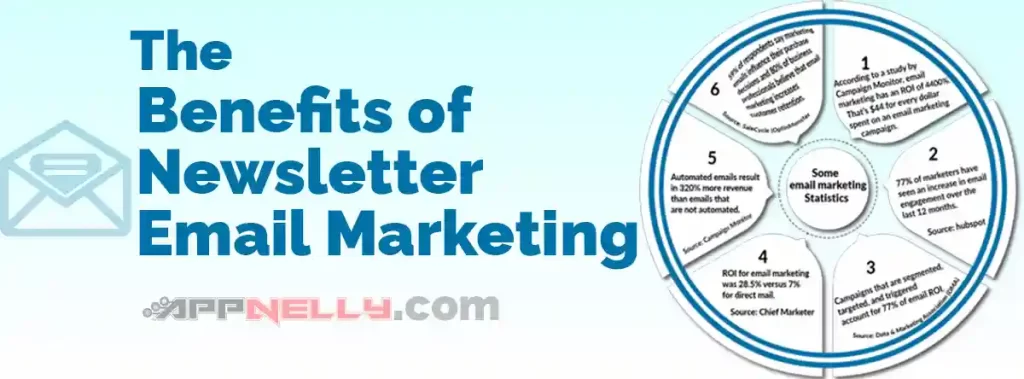
We’ve seen some reasons why newsletter email marketing is so important but in order to throw more light on the importance of newsletter email marketing, we we’ll discuss some of its benefits. Here are the 12 benefits of newsletter email marketing:
The 12 benefits of newsletter email marketing
- Increased brand awareness: By sending regular newsletters to your subscribers, you keep your brand top-of-mind with them. When your subscribers receive your emails consistently, they are more likely to remember your brand, products, and services. This can help to build trust and familiarity with your brand over time.
- Targeted communication: You can segment your email list and send targeted messages to specific groups of subscribers based on their interests or behavior. This allows you to personalize your messaging and improve the effectiveness of your campaigns.
- Cost-effective: Email marketing is a cost-effective way to reach a large number of people. You can create and send a newsletter to thousands of subscribers at a fraction of the cost of traditional marketing methods.
- Measurable results: Email marketing provides measurable results. You can track open rates, click-through rates, and conversion rates to see how your campaigns are performing and make improvements as needed.
- Increased website traffic: By including links to your website in your newsletter, you can drive traffic to your site and increase the likelihood of conversions.
- Improved customer loyalty: A well-crafted newsletter can help build customer loyalty by providing valuable content, exclusive offers, and personalized messaging that makes subscribers feel valued and appreciated.
- Builds credibility: Consistently sending quality newsletters with valuable content can help build credibility and establish your brand as an authority in your industry.
- Enhances customer engagement: Newsletter email marketing encourages two-way communication between your brand and your subscribers. By including calls-to-action and encouraging feedback, you can foster engagement and build relationships with your audience.
- Increased sales: By promoting your products and services in your newsletter, you can increase sales and revenue for your business.
- Builds a loyal community: By providing valuable content and engaging with your subscribers regularly, you can build a loyal community of followers who are more likely to refer your brand to others and become brand ambassadors.
- Easy to share: Newsletters are easy to share with others. Subscribers can forward your newsletter to friends and family, or share it on social media, which can help increase your reach and attract new subscribers.
- Increased customer lifetime value: By regularly engaging with your customers through a newsletter, you can increase their lifetime value by promoting repeat purchases and encouraging customer loyalty. This can result in increased revenue over time and a more stable customer base.
Steps to Create a Successful Newsletter Email Marketing Campaign

Creating a successful newsletter email marketing campaign requires careful planning and execution. Follow/Apply these 5 steps to create a compelling newsletter that engages your subscribers and drives conversions.
The 5 Steps to Create a Successful Newsletter Email Marketing Campaign are:
- Define Your Audience and Goals
The first step in creating a successful newsletter email marketing campaign is to define your audience and goals. This will help you tailor your newsletter to your target audience and ensure that your newsletter aligns with your business goals.
In other words, before you start creating your newsletter, you need to first define your target audience and what you intend to achieve.
Ask yourself: Who are your subscribers, what do they want to see from you, what do you hope to achieve with your newsletter? Consider these factors when creating the content of your newsletter.
- Choose an Email Marketing Platform
The next step is to choose an email marketing platform. There are many email marketing platforms/ email marketing services available, including Mailchimp, Constant Contact, Campaign Monitor, Sendinblue, etc. Choose a platform that meets your business needs and budget, and that offers the features you need in order to carry out a successful newsletter email marketing.
Pro Tips: check out the 5 Best Newsletter Email Marketing Plugins for WordPress or the 3 Best Newsletter Email Marketing PHP Script that you can use to create your own email marketing platform or website. (Our freelance team can do the setup for you if you need our service)
- Create a Compelling Subject Line and Content
Your subject line is the first thing your subscribers will see, so make it engaging and informative. it should be attention-grabbing and relevant to your content. Keep it short and sweet, and use action words to encourage opens. Your content should be informative, relevant, and valuable to your subscribers. Use a clear and concise writing style, and include images, videos, and links where necessary.
- Optimize Your Newsletter for Mobile Devices
Many people access their email using their mobile devices because their mobile device is portable and always with them, so it's essential to optimize your newsletter for mobile devices. Make sure your newsletter is mobile-responsive. so, ensure that your newsletter is mobile-friendly. Use a responsive design that adjusts to different screen sizes, and make sure your images and text are easy to read on a small screen.
- Test and Measure Your Newsletter's Effectiveness
The final step in this guide is to test and measure your newsletter's effectiveness.
Before you send your newsletters, test it first to be sure that everything looks and works as intended.
Send a test email to yourself and any team members to check for errors or formatting issues. (Pro Tips: ensure you have an email list called Test, Testers or whatever you want to call it. This list will have your email and that of your team members for testing your newsletters first before sending it out to your intended audience.)
After you send your newsletter, track metrics such as open rates, click-through rates, and conversions. Use this data to refine your strategy and improve your future newsletters.
By following these steps, you can create a successful newsletter email marketing campaign that engages your subscribers and drive conversions. Remember to continually test and refine your strategy to improve your results over time.
Best practices for newsletter email marketing

Newsletters are popular form of email marketing, providing businesses with a way to communicate regularly with subscribers and offer value through helpful tips, promotions, and exclusive content. However, creating a successful newsletter email marketing campaign requires more than just sending out a weekly or monthly email.
To make the most of your newsletter, it's important to follow best practices that can help increase open rates, click-through rates, and conversions. Next, we'll explore 10 best practices for newsletter email marketing that can help you create an engaging, effective, and valuable newsletters that your subscribers will look forward to receiving.
Now, Let’s take a look at the 10 best practices for newsletter email marketing to help you create effective campaigns that resonate with your audience and deliver results.
The 10 best practices for newsletter email marketing are:
- Segment your email list: Segment your email list based on demographics, interests, and behaviors to send targeted messages that resonate with your subscribers.
- Use a clear and concise subject line: Use a subject line that accurately reflects the content of your newsletter and encourages subscribers to open it.
- Provide valuable content: Provide valuable and relevant content in your newsletter that addresses the needs and interests of your subscribers.
- Use visuals: Use visuals, such as images and videos, to break up your text and make your newsletter more engaging.
- Make it mobile-friendly: Ensure that your newsletter is optimized for mobile devices, as many subscribers read emails on their smartphones and tablets.
- Use a clear call-to-action (CTA): Use a clear and compelling CTA that encourages subscribers to take the desired action, such as making a purchase or visiting your website.
- Test and optimize: Test different elements of your newsletter, such as subject lines and CTAs, to optimize your campaigns and improve performance.
- Follow email marketing regulations: Ensure that your newsletter complies with email marketing regulations, such as the CAN-SPAM Act, to avoid legal issues and protect your brand reputation.
- Be consistent: Send your newsletter on a regular schedule, such as weekly or monthly, to build a predictable cadence with your subscribers.
- Analyze and measure results: Track and analyze key metrics, such as open rates and click-through rates, to measure the success of your newsletter campaigns and make data-driven improvements.
By following these best practices, you can create an effective newsletter campaign that engage your audience, build brand loyalty, and drive sales for your business.
Common Mistakes to Avoid in Newsletter Email Marketing

Email marketing, in particular, is a powerful tool that can help you build a loyal customer base and increase sales. However, if you're not careful, it's easy to make mistakes that can negatively impact your campaign's performance. Now, we'll discuss eleven common mistakes to avoid in newsletter email marketing, so you can optimize your campaigns for success.
The 11 common mistakes to avoid in newsletter email marketing
- Not Segmenting Your Email List
One of the most common mistakes in email marketing is not segmenting your email list. Your subscribers have different interests, behaviors, and preferences. Sending the same message to all of them is not effective. By segmenting your email list, you can personalize your messages and send targeted campaigns to specific groups of subscribers. This will help you improve engagement and conversions.
- Not Using a Clear and Compelling Subject Line
Your subject line is the first thing that your subscribers will see in their inbox. If it's not clear and compelling, they may not open your email at all. Your subject line should be relevant to your message, concise, and grab your subscribers' attention. Avoid using spammy or clickbait subject lines, as this can harm your sender reputation and lead to lower open rates.
- Ignoring Mobile Optimization
More and more people are accessing their emails on mobile devices, so it's essential to optimize your email campaigns for mobile devices. If your emails don't look good on a mobile screen, your subscribers will likely delete them or mark them as spam. Use responsive design, keep your message short, and use clear and legible fonts to make your emails mobile-friendly.
- Not Providing Valuable Content
Your subscribers have given you their email addresses because they're interested in what you have to offer. If you're not providing valuable content in your newsletters, they may lose interest and unsubscribe from your list. Your content should be relevant, informative, and engaging. Use a conversational tone, add images, videos, or infographics to make your newsletters visually appealing and interesting.
- Sending Emails Too Often
Sending too many emails too often can lead to subscriber fatigue and a higher unsubscribe rate. It's important to find the right frequency for your email campaigns. Test different sending frequencies and analyze your subscribers' engagement to determine the optimal frequency. You can also use automation tools to send targeted campaigns based on your subscribers' behavior.
- Not Optimizing Your Call-to-Action (CTA)
Your call-to-action is the key element that drives conversions in your email campaigns. If your CTA is not clear, compelling, and easy to follow, your subscribers may not take the desired action. Use action-oriented language, use contrasting colors, and make your CTA visible and easy to click.
- Not Testing Your Campaigns
Testing is essential to optimize your email campaigns for better results. Not testing your campaigns can lead to missed opportunities and lower conversions. Test different elements such as subject lines, sending frequency, content, CTAs, and email design. Analyze your results and use them to improve your future campaigns.
- Ignoring Your Analytics
Your email analytics provide valuable insights into your subscribers' behavior and preferences. Ignoring your analytics can lead to missed opportunities and lower engagement rates. Monitor your open rates, click-through rates, conversion rates, and other metrics to optimize your campaigns for better results.
- Purchasing email lists: Purchasing email lists can damage your reputation and lead to high unsubscribe rates and low engagement.
- Focusing too much on promotion: Your newsletter should provide value to your subscribers, not just promote your products or services.
- Not Providing an Easy Way to Unsubscribe
Not providing an easy way to unsubscribe is one of the most common mistakes to avoid in newsletter email marketing. When someone signs up to receive your newsletter, they are giving you permission to communicate with them. However, it is essential to understand that it’s their right to withdraw that permission at any time.
If you do not provide an easy way for subscribers to unsubscribe, it can lead to frustration, annoyance, and a negative impression of your brand. This can damage your reputation and make it less likely for people to want to hear from you in the future.
By making the unsubscribe process easy, you show your subscribers that you respect their time and their preferences. It also helps ensure that your email list only contains engaged and interested subscribers, which can improve your email deliverability rates and open rates.
Examples of Successful Newsletter Email Marketing Campaigns

The Anatomy of a Successful Newsletter Email Marketing Campaign
Before we dive into the examples, let's take a look at the key elements that make up a successful newsletter email marketing campaign:
- Clear and concise subject line: The subject line is the first thing that subscribers see when they receive your email. A clear and concise subject line can increase the chances of your email being opened.
- Eye-catching design: A visually appealing design can help your newsletter stand out in a crowded inbox. Make sure to use images, colors, and fonts that align with your brand.
- Valuable content: Your newsletter should provide value to your subscribers. This can include industry news, tips and tricks, or exclusive promotions.
- Personalization: Personalized emails can help you build stronger relationships with your subscribers. Use their first name in the greeting and tailor the content to their interests.
- Clear call-to-action: Your newsletter should have a clear call-to-action that encourages subscribers to take action. This can be anything from visiting your website to making a purchase.
Now that we've covered the key elements of a successful newsletter email marketing campaign, let's take a look at some examples using some popular companies.
The Examples of Successful Newsletter Email Marketing Campaigns are:
- Mailchimp: Mailchimp's newsletter promotes their email marketing and automation software, providing users with tips and advice on how to improve their email campaigns. They often include case studies, success stories, and industry insights, as well as updates about new features and integrations. By positioning themselves as a trusted resource for email marketing best practices, Mailchimp is able to attract and retain users, while also driving sales and promoting their brand.
- Rank Math: Rank Math's newsletter focuses on providing users with helpful tips and advice for improving their SEO strategies. They often include links to blog posts and tutorials, as well as information about new features and updates to their Plugin. By offering value to their subscribers, Rank Math is able to build trust and establish themselves as experts in the field.
- Envato Market: Envato Market's newsletter promotes their marketplace of digital products and services. They often include new product releases, featured authors, and exclusive discounts for subscribers. By highlighting their top-selling items and offering exclusive deals, Envato Market is able to drive traffic and sales to their website.
- Namecheap: Namecheap's newsletter focuses on providing valuable information about website hosting, domain registration, and online security. They often include tips and tutorials for beginners, as well as updates about new products and services. By positioning themselves as a trusted resource for website owners, Namecheap is able to build brand loyalty and retain customers.
- Placeit: Placeit's newsletter promotes their online platform for creating professional-looking graphics and designs. They often include examples of user-created content, as well as tutorials and design tips. By showcasing the versatility and ease-of-use of their platform, Placeit is able to attract new users and encourage current users to continue using their service.
- Wondershare: Wondershare's newsletter promotes their software products for video editing, PDF editing, data recovery, and more. They often include helpful tutorials, product updates, and exclusive discounts for subscribers. By providing value through educational content and offering discounts to incentivize purchases, Wondershare is able to engage and retain their audience while also driving sales and promoting their brand.
- Alison: Alison's newsletter promotes their online learning platform and includes information about new courses and certifications, as well as success stories from past students. By highlighting the value of their platform and sharing real-world examples of its benefits, Alison is able to attract new users and encourage existing users to continue their education journey.
- Grammarly: Grammarly is a writing assistant tool that helps users improve their writing skills. Their newsletter is designed to provide subscribers with useful writing tips, as well as promote their product. The newsletter is visually appealing, with a clean design and a clear call-to-action to try Grammarly for free. The content is focused on solving the pain points of their target audience, such as how to avoid common grammar mistakes and improve their writing style.
- BuzzFeed: BuzzFeed is a digital media company that creates and shares viral content across social media. Their newsletter is designed to provide subscribers with entertaining and informative content, such as quizzes, listicles, and news stories. The newsletter is visually appealing, with eye-catching images and bold headings. The content is shareable and appeals to a wide range of interests, making it easy for subscribers to engage with and share with their friends.
- Spotify: Spotify is a music streaming platform that allows users to listen to millions of songs and podcasts. Their newsletter is designed to provide subscribers with personalized music recommendations, as well as promote their platform. The newsletter is well-designed, with clear headings and subheadings that make it easy to navigate. The content is personalized to the subscriber's listening habits, providing them with new music to discover and enjoy.
- Add Yours: Follow the pattern and add yours in the comment, make use of the summarized tips below.
Overall, successful newsletter email marketing campaigns are those that provide value to subscribers, whether through helpful tips and advice, exclusive discounts, or engaging content. By establishing themselves as experts in their respective fields and building trust with their audience, these companies are able to drive traffic, increase sales, and build brand loyalty.
Conclusion
In conclusion, newsletter email marketing is an effective way to engage with your audience and promote your brand. By creating a well-designed and targeted newsletter, you can build relationships with your subscribers, promote your products or services, and drive traffic to your website. By following best practices and avoiding common mistakes, you can create successful newsletter email marketing campaigns that will help you grow your business.
Recap of the importance of newsletter email marketing:
Newsletter email marketing is important because it allows you to connect with your audience in a personalized way. It can help you build trust, establish your authority, and keep your subscribers informed about your business. By sending regular newsletters, you can stay top of mind and generate more sales and leads.
Call-to-action to start your own newsletter email marketing campaign:
If you haven't already started a newsletter email marketing campaign, now is the time to get started. Identify your target audience, create a content plan, and choose an email marketing platform to get you started. With the right strategy and execution, you can create a successful newsletter that engages your subscribers and drives results.
Final thoughts and additional resources:
Remember that newsletter email marketing is an ongoing process that requires regular attention and optimization. Be sure to monitor your metrics, test your content and design, and stay up-to-date with best practices.
- If you're a beginner or want to see the post that motivated us to write this article then you should also read: What is Email Marketing?
- Do you want to learn How to Overcome the Challenges of Email Marketing? if yes then click it.
- If you have a WordPress website and want a WordPress plugin that will let you do email marketing from your wp dashboard then you should check-out The 5 Best Email Marketing Plugins for WordPress.
If you want to build your own email marketing platform or website using a ready-made php script then you should check-out The 3 Best Email Marketing PHP Script. (Need our freelance team to do the setups for you? Send an email to freelance@appnelly.com.)
If you need additional resources, there are many helpful guides and tutorials available online to help you get started and improve your campaigns.
Good luck with your newsletter email marketing efforts!
